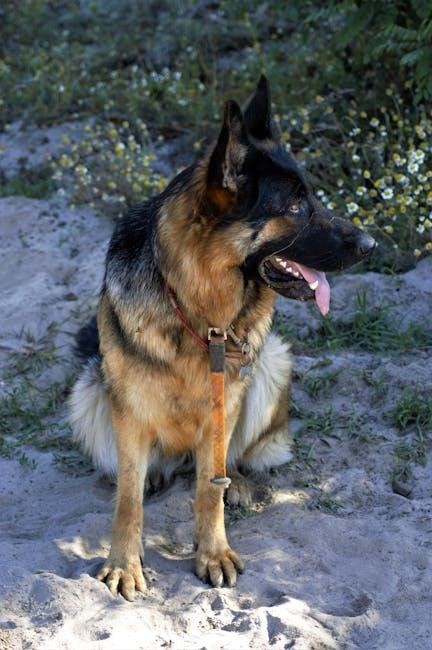Feather flags are lightweight, portable marketing tools used for promotions, events, and advertising. Made from durable fabric, they feature vibrant designs that capture attention effectively. Their sleek, curved shape and height make them ideal for both indoor and outdoor use, ensuring visibility and impact in various settings.
1.1 What Are Feather Flags?
Feather flags are lightweight, portable marketing tools designed to promote businesses, events, or campaigns effectively. Typically made from durable, weather-resistant fabric, they feature vibrant, curved designs that catch the eye from a distance. These flags are supported by flexible poles and bases, allowing them to sway gently in the wind, enhancing their visibility. They are often used for outdoor advertising due to their portability and ease of assembly. Feather flags are ideal for high-traffic areas such as storefronts, trade shows, and event entrances, making them a popular choice for businesses seeking to attract attention and convey their message clearly.
1.2 Importance of Proper Assembly
Proper assembly of feather flags is crucial for ensuring stability, visibility, and longevity. A well-assembled flag stands upright, making it more visible in high-traffic areas. It also prevents damage from wind or uneven surfaces, reducing the risk of the flag toppling over. Correct assembly ensures all components function together seamlessly, providing a professional appearance. Neglecting proper setup can lead to safety hazards, such as tripping over loose parts or the flag collapsing. Additionally, a properly assembled flag is easier to maintain and transport, saving time and effort. By following assembly instructions carefully, you ensure your feather flag performs optimally and effectively communicates your message.
Materials and Components Needed
The assembly requires a flag fabric, durable poles, a sturdy base, hardware for connection, and accessories like ropes or ties for secure setup and stability.
2.1 Flag Fabric
The flag fabric is a crucial component of feather flags, typically made from durable, weather-resistant materials like polyester or nylon. These fabrics are lightweight yet sturdy, ensuring longevity and vibrant color retention. The material is often treated to withstand outdoor conditions, including sunlight and light rain, making it ideal for both indoor and outdoor use.
High-quality flag fabrics are printed using dye-sublimation or screen printing techniques, which ensure bright, long-lasting colors. The fabric’s design should be simple and focused to maximize visibility from a distance. Proper care, such as regular cleaning and storage, helps maintain its appearance and durability over time.
2.2 Poles and Hardware
Poles and hardware are essential components for feather flag assembly. Typically, feather flags use lightweight yet durable poles made from materials like fiberglass or aluminum. These poles often come in telescoping or sectional designs, allowing for easy adjustment and portability. The hardware includes connectors, clips, and rings that securely attach the flag fabric to the pole. Durable and weather-resistant, these components ensure the flag remains stable and visually appealing. Properly assembling the poles and hardware is crucial for the flag’s stability and longevity, especially in outdoor conditions. Ensuring all parts fit snugly and are tightly secured will prevent damage and ensure your feather flag stands upright and attracts attention effectively.
2.3 Base and Stand
The base and stand are essential for stabilizing your feather flag, ensuring it stands upright and secure. Common base types include ground stakes, water bases, and cross stands. Ground stakes are ideal for outdoor use on grass or soil, while water bases are filled with water or sand for added weight on hard surfaces. Cross stands are versatile and suitable for indoor or temporary setups. The stand connects the flag pole to the base, providing the necessary height and balance. Proper installation of the base ensures the flag remains steady, even in windy conditions. Always choose a base that matches your environment and usage needs to maintain stability and prevent the flag from tipping over. Regularly inspect the base for damage to ensure long-term durability and safety.
2.4 Additional Accessories
Besides the core components, several accessories can enhance the functionality and durability of your feather flag setup. A carrying bag is essential for easy transport and storage, protecting the flag and hardware from damage. Weighted bases provide extra stability, especially on uneven surfaces or windy conditions. Rotate bearings allow the flag to spin freely in the wind, reducing wear and tear. Clips or ties can secure the flag fabric tightly to the pole, preventing it from flapping loose. These accessories ensure your feather flag remains visually appealing and functional, making it a reliable marketing tool for various events and promotions.

Step-by-Step Assembly Guide
Begin by unpacking and organizing all components. Attach the flag fabric to the pole using the provided rings or clips. Assemble pole sections securely, ensuring tight connections. Finally, place the flag in the base stand and tighten all parts for stability.
3.1 Unpacking and Organizing Components
Begin by carefully unpacking all components from the packaging. Lay out the flag fabric, poles, base, and hardware on a clean, flat surface. Take inventory to ensure no parts are missing or damaged. Organize the components into categories: flag fabric, pole sections, connectors, base, and accessories. This step helps streamline the assembly process and prevents losing small parts. Inspect each item for completeness and condition. If any component is damaged, contact the supplier immediately. A well-organized workspace ensures a smooth and efficient assembly experience. Always refer to the instruction manual for a detailed list of included parts and their purposes.
3.2 Attaching the Flag Fabric to the Pole
Attaching the flag fabric to the pole is a crucial step in the assembly process. Begin by locating the sleeve sewn into the flag fabric, designed to slide over the pole. Ensure the fabric is aligned with the pole’s direction, typically featuring graphics facing the correct orientation. Gently slide the fabric over the pole, starting from the top and working downward. Secure the fabric using clips, hooks, or Velcro attachments provided with your kit. Tighten any adjustable straps to ensure a snug fit, preventing flapping or sagging. Double-check the alignment and tension to ensure the flag appears smooth and professional. Proper attachment ensures visibility and durability, especially in outdoor conditions. Avoid over-tightening, as this could damage the fabric or hardware.
3.3 Assembling the Pole Sections
To assemble the pole sections, start by aligning the male and female ends of the poles. Gently twist and push the sections together until they click securely. Ensure each section is fully connected by checking the stability of the pole. If the sections feel loose, use a rubber mallet to tap them firmly into place. Avoid over-tightening, as this could damage the hardware. Once all sections are assembled, stand the pole upright to verify its stability. Proper alignment and a snug fit are crucial for the flag to stay upright and visible. If any section doesn’t fit properly, disassemble and try again, ensuring the poles are aligned correctly. Refer to the manufacturer’s instructions for specific guidance on your flag’s unique hardware setup.
3.4 Securing the Flag to the Base
To ensure stability, insert the flagpole into the base carefully and align it with the stand’s receptacle. Tighten any provided fasteners firmly to secure the pole in place. Double-check the connection to prevent any wobbling or instability. For added stability, especially outdoors, consider using weighted bases or ground stakes. Always ensure the flag is tightly attached to the pole before securing it to the base to avoid any gaps or flapping. Finally, test the setup by gently tugging on the flag to confirm it holds firmly in place. Proper securing ensures the feather flag remains upright and visible, even in light winds.
3.5 Final Tightening and Adjustment
After assembling the flag and securing it to the base, perform a final check to ensure all connections are tight and stable. Gently tug on the flag fabric to confirm it is evenly spread and properly attached to the pole. Adjust the flag’s position to achieve a balanced and visually appealing display. For outdoor use, make sure the base is weighted or secured firmly to prevent swaying or toppling in the wind. Double-check all bolts and clips to ensure they are tightened sufficiently. If necessary, use the provided tools to make any minor adjustments for a seamless and professional appearance. Once everything is secure, your feather flag is ready for placement in a high-traffic area to maximize visibility and impact.

Tips for Optimal Placement
Position your feather flag in high-traffic areas for maximum visibility. Ensure accessibility for easy assembly and disassembly. Avoid placing near obstacles or pathways to prevent blockages.
4.1 Choosing High-Traffic Areas
Positioning your feather flag in high-traffic areas is crucial for maximizing visibility and impact. Ideal locations include busy streets, event entrances, or near storefronts. Ensure the flag is placed where it can easily catch the eye of passersby without obstructing pathways or entrances. Consider areas with consistent foot traffic, such as shopping districts, event centers, or festival grounds. Avoid placing the flag in secluded or low-visibility spots, as this reduces its effectiveness. For large events, multiple flags can be strategically positioned to guide visitors or highlight key areas. By selecting a high-traffic location, you ensure your message reaches a wider audience, enhancing brand awareness and promotional success.
4.2 Ensuring Accessibility
Accessibility is crucial for feather flag placement, as it ensures easy assembly, disassembly, and maintenance. Choose locations with ample space for personnel to maneuver without obstructing pathways or entrances. Avoid positioning flags in areas with heavy foot traffic or near sensitive equipment. Ensure the base is stable and level to prevent wobbling or tipping. Select locations that allow quick access for adjustments or repairs, minimizing downtime. Consider the height and visibility requirements while maintaining a safe distance from power lines or water features. Proper accessibility ensures your feather flag remains functional, secure, and visually appealing, maximizing its impact while maintaining safety and convenience.

4.3 Avoiding Obstructions
When placing your feather flag, it’s crucial to ensure it doesn’t obstruct pathways, entrances, or visibility. Avoid areas with overhead obstacles like trees, signs, or power lines, as they can interfere with the flag’s movement or visibility. Check the surrounding area for any potential obstructions, such as nearby structures or furniture, and position the flag to maintain clear accessibility. Ensure the flag’s height doesn’t block essential views or signage, and keep it away from high-traffic walkways to prevent accidents. By strategically placing your feather flag in an open, visible spot, you can maximize its effectiveness while maintaining a safe and unobstructed environment.
Maintenance and Storage
Regularly clean the flag fabric with mild detergent and water. Store in a dry, cool place to prevent damage. Inspect hardware for wear and tear.
5.1 Cleaning the Flag Fabric
Regular cleaning of the feather flag fabric is essential to maintain its vibrant appearance and durability. Start by gently brushing off any loose dirt or debris. For more thorough cleaning, hand wash the fabric using mild detergent and lukewarm water. Avoid harsh chemicals or abrasive cleaners, as they may damage the material or fade the print. Use a soft-bristle brush to scrub away stubborn stains, working in a gentle, circular motion. Rinse the fabric thoroughly to ensure no soap residue remains. Allow the flag to air dry completely, as machine drying can cause shrinkage or damage to the fabric. Proper cleaning ensures your feather flag remains attractive and professional for extended use.
5.2 Storing the Flag Properly
Proper storage is essential to maintain the quality and longevity of your feather flag. After disassembling, clean the fabric gently with a mild detergent to remove dirt or stains. Allow it to air dry completely before storing to prevent mold or mildew. Store the flag in a protective bag or case to shield it from dust and damage. Keep the hardware, such as poles and bases, in a separate, labeled container to avoid misplacement. Ensure the storage area is cool, dry, and away from direct sunlight to prevent fading or warping. Regularly inspect stored components for signs of wear or damage to address issues early. Proper storage ensures your feather flag remains in excellent condition for future use.
5.3 Regular Inspection of Hardware
Regular inspection of the feather flag hardware is crucial for ensuring durability and functionality. Check the poles, joints, and base for signs of wear, rust, or damage. Inspect all connecting pieces and screws to ensure they are secure and not loose. If you notice any bent or corroded parts, replace them immediately to prevent further damage. After outdoor use, clean the hardware to remove dirt or debris that might affect performance. Lubricate moving parts occasionally to maintain smooth operation. Regular inspections help identify potential issues early, preventing unexpected failures during use. This routine maintenance ensures your feather flag remains stable and secure in various conditions, extending its lifespan and reliability.
Troubleshooting Common Issues
Address common problems like the flag not staying upright by tightening connections. If poles don’t fit, check for misaligned sections or damage. Ensure the base is stable on even ground to prevent wobbling, and secure it firmly to avoid tipping in windy conditions.
6.1 Flag Not Staying Upright
If the feather flag isn’t staying upright, check the pole alignment and ensure it’s fully extended. Verify the flag fabric is securely attached to the pole sleeve, as loose connections can cause drooping. Tighten any adjustable straps or clips firmly. Additionally, ensure the base is placed on a stable, even surface. If the issue persists, inspect the flag for tears or damage that might affect its shape. In windy conditions, consider using a heavier base or moving the flag to a sheltered area to prevent it from swaying excessively. Proper assembly and balance are key to maintaining the flag’s upright position and visual appeal.
6.2 Poles Not Fitting Together
If the poles are not fitting together, check for any obstructions or debris inside the connections. Ensure all sections are aligned properly and gently twist while inserting to secure. If issues persist, lightly lubricate the joints with silicone spray. Avoid forcing the pieces, as this may cause damage. If a section is bent or warped, replace it immediately. Always refer to the manufacturer’s instructions for specific guidance on pole assembly. Proper alignment and care ensure a sturdy and professional appearance for your feather flag display.
6.3 Base Not Stabilizing
If the base of your feather flag isn’t stabilizing, it may be due to uneven ground or insufficient weight distribution. To address this, ensure the base is placed on a flat surface and consider using sandbags or weights for added stability. If the issue persists, check for loose hardware connections and tighten them firmly. For outdoor use, avoid soft or muddy ground, as these can cause the base to sink or shift. Regularly inspect the base for damage or wear, as compromised components can affect stability. Proper stabilization ensures the flag remains upright and secure, even in windy conditions.

Safety Precautions
Ensure the feather flag is securely anchored to prevent toppling in windy conditions. Keep the surrounding area clear to avoid tripping hazards. Always follow manufacturer assembly guidelines for stability and safety.
7.1 Avoiding Overly Windy Conditions
Avoiding overly windy conditions is crucial for the stability and longevity of your feather flag. Strong winds can cause the flag to bend excessively, potentially damaging the pole or fabric. Ensure your flag is only used in moderate weather conditions. If wind speeds exceed the manufacturer’s recommendations, disassemble and store the flag to prevent damage. For added stability in slightly windy areas, weigh down the base or use ground stakes if available. Never leave the flag unattended in gusty environments, as it may tip over or become dislodged, posing a safety hazard. Always prioritize safety and protect your investment by securing the flag properly or storing it during harsh weather.
7.2 Ensuring Stability on Uneven Ground
For optimal stability on uneven surfaces, use adjustable bases or weighted stands to level your feather flag. Placing sandbags or weights around the base enhances balance. Ensure the pole is securely locked and tightly fitted to prevent wobbling. If the ground is soft, consider using ground spikes or anchors for added support. Regularly inspect the area for obstacles that could disrupt balance. By taking these precautions, you can maintain your flag’s stability and ensure it remains upright, even on irregular terrain.
7.3 Preventing Accidental Tripping
To prevent accidental tripping, ensure the feather flag and its base are positioned away from high-traffic pathways and walkways. Secure the base firmly on level ground, avoiding uneven surfaces that could cause instability. Keep the surrounding area clear of wires or loose items. Use warning markers or reflective tape to increase visibility, especially in low-light conditions. Regularly inspect the flag and its hardware to ensure all components are tightly secured. Avoid placing the flag near stairs, doorways, or narrow passages where it could obstruct movement. By taking these precautions, you can minimize the risk of tripping hazards and ensure a safe environment for everyone around the feather flag display.
Feather flags are essential marketing tools offering visibility and portability. Proper assembly and placement ensure maximum impact, making them a valuable asset for any event.
8.1 Summary of Key Steps
Assembling a feather flag involves several straightforward steps. Start by unpacking and organizing all components, ensuring nothing is missing. Attach the flag fabric securely to the pole, making sure it’s tightly fastened. Assemble the pole sections by aligning and snapping them together. Next, attach the flag to the base or stand firmly. Tighten all connections to ensure stability. Position the flag in a high-traffic area for maximum visibility, avoiding obstructions and ensuring accessibility. Regularly inspect and clean the flag to maintain its appearance. Store the flag properly when not in use to prolong its lifespan; By following these steps, you can ensure your feather flag is displayed effectively and remains in great condition.
8.2 Final Tips for Success
For long-term success with your feather flag, ensure regular maintenance and proper storage. Always follow the manufacturer’s instructions for cleaning and assembly. Check hardware periodically to prevent wear and tear. Store the flag in a dry, cool place when not in use to maintain its vibrant colors and shape. Practice safety by avoiding windy conditions and uneven surfaces. Consider investing in a high-quality base for stability. Lastly, plan ahead by ordering replacement parts or fabric if needed. By adhering to these tips, your feather flag will remain an effective and eye-catching tool for years to come.



